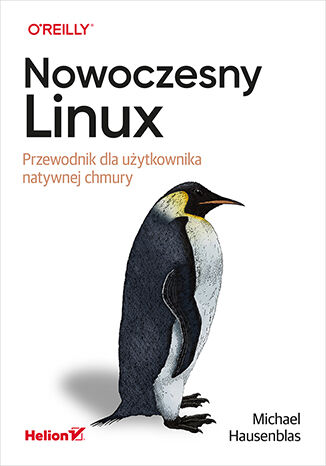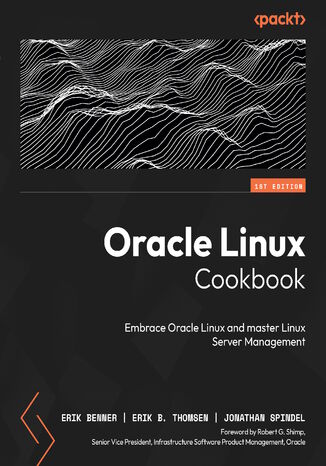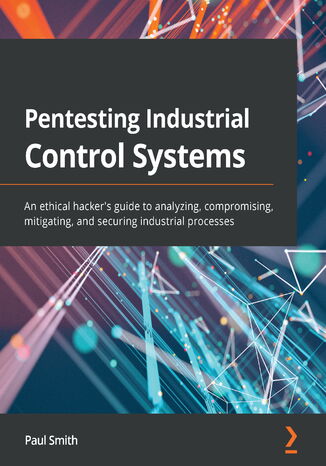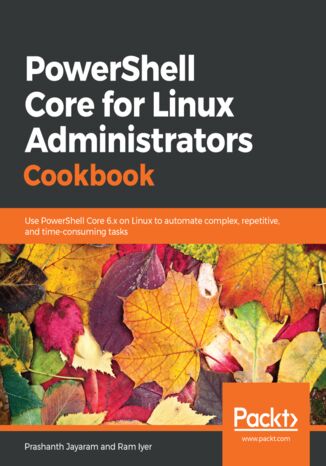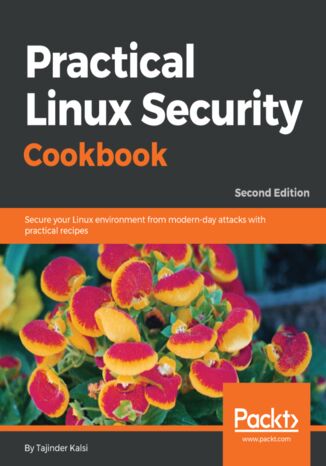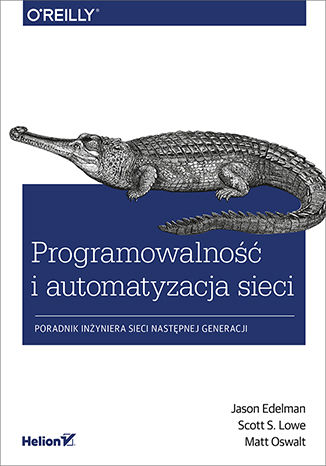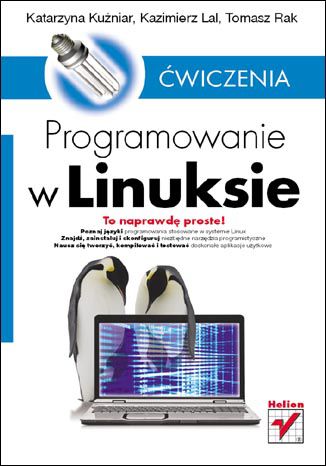Kategorie
Ebooki
-
Biznes i ekonomia
- Bitcoin
- Bizneswoman
- Coaching
- Controlling
- E-biznes
- Ekonomia
- Finanse
- Giełda i inwestycje
- Kompetencje osobiste
- Komputer w biurze
- Komunikacja i negocjacje
- Mała firma
- Marketing
- Motywacja
- Multimedialne szkolenia
- Nieruchomości
- Perswazja i NLP
- Podatki
- Polityka społeczna
- Poradniki
- Prezentacje
- Przywództwo
- Public Relation
- Raporty, analizy
- Sekret
- Social Media
- Sprzedaż
- Start-up
- Twoja kariera
- Zarządzanie
- Zarządzanie projektami
- Zasoby ludzkie (HR)
-
Dla dzieci
-
Dla młodzieży
-
Edukacja
-
Encyklopedie, słowniki
-
E-prasa
- Architektura i wnętrza
- BHP
- Biznes i Ekonomia
- Dom i ogród
- E-Biznes
- Ekonomia i finanse
- Ezoteryka
- Finanse
- Finanse osobiste
- Firma
- Fotografia
- Informatyka
- Kadry i płace
- Kobieca
- Komputery, Excel
- Księgowość
- Kultura i literatura
- Naukowe i akademickie
- Ochrona środowiska
- Opiniotwórcze
- Oświata
- Podatki
- Podróże
- Psychologia
- Religia
- Rolnictwo
- Rynek książki i prasy
- Transport i Spedycja
- Zdrowie i uroda
-
Historia
-
Informatyka
- Aplikacje biurowe
- Bazy danych
- Bioinformatyka
- Biznes IT
- CAD/CAM
- Digital Lifestyle
- DTP
- Elektronika
- Fotografia cyfrowa
- Grafika komputerowa
- Gry
- Hacking
- Hardware
- IT w ekonomii
- Pakiety naukowe
- Podręczniki szkolne
- Podstawy komputera
- Programowanie
- Programowanie mobilne
- Serwery internetowe
- Sieci komputerowe
- Start-up
- Systemy operacyjne
- Sztuczna inteligencja
- Technologia dla dzieci
- Webmasterstwo
-
Inne
-
Języki obce
-
Kultura i sztuka
-
Lektury szkolne
-
Literatura
- Antologie
- Ballada
- Biografie i autobiografie
- Dla dorosłych
- Dramat
- Dzienniki, pamiętniki, listy
- Epos, epopeja
- Esej
- Fantastyka i science-fiction
- Felietony
- Fikcja
- Humor, satyra
- Inne
- Klasyczna
- Kryminał
- Literatura faktu
- Literatura piękna
- Mity i legendy
- Nobliści
- Nowele
- Obyczajowa
- Okultyzm i magia
- Opowiadania
- Pamiętniki
- Podróże
- Poemat
- Poezja
- Polityka
- Popularnonaukowa
- Powieść
- Powieść historyczna
- Proza
- Przygodowa
- Publicystyka
- Reportaż
- Romans i literatura obyczajowa
- Sensacja
- Thriller, Horror
- Wywiady i wspomnienia
-
Nauki przyrodnicze
-
Nauki społeczne
-
Podręczniki szkolne
-
Popularnonaukowe i akademickie
- Archeologia
- Bibliotekoznawstwo
- Filmoznawstwo
- Filologia
- Filologia polska
- Filozofia
- Finanse i bankowość
- Geografia
- Gospodarka
- Handel. Gospodarka światowa
- Historia i archeologia
- Historia sztuki i architektury
- Kulturoznawstwo
- Lingwistyka
- Literaturoznawstwo
- Logistyka
- Matematyka
- Medycyna
- Nauki humanistyczne
- Pedagogika
- Pomoce naukowe
- Popularnonaukowa
- Pozostałe
- Psychologia
- Socjologia
- Teatrologia
- Teologia
- Teorie i nauki ekonomiczne
- Transport i spedycja
- Wychowanie fizyczne
- Zarządzanie i marketing
-
Poradniki
-
Poradniki do gier
-
Poradniki zawodowe i specjalistyczne
-
Prawo
- BHP
- Historia
- Kodeks drogowy. Prawo jazdy
- Nauki prawne
- Ochrona zdrowia
- Ogólne, kompendium wiedzy
- Podręczniki akademickie
- Pozostałe
- Prawo budowlane i lokalowe
- Prawo cywilne
- Prawo finansowe
- Prawo gospodarcze
- Prawo gospodarcze i handlowe
- Prawo karne
- Prawo karne. Przestępstwa karne. Kryminologia
- Prawo międzynarodowe
- Prawo międzynarodowe i zagraniczne
- Prawo ochrony zdrowia
- Prawo oświatowe
- Prawo podatkowe
- Prawo pracy i ubezpieczeń społecznych
- Prawo publiczne, konstytucyjne i administracyjne
- Prawo rodzinne i opiekuńcze
- Prawo rolne
- Prawo socjalne, prawo pracy
- Prawo Unii Europejskiej
- Przemysł
- Rolne i ochrona środowiska
- Słowniki i encyklopedie
- Zamówienia publiczne
- Zarządzanie
-
Przewodniki i podróże
- Afryka
- Albumy
- Ameryka Południowa
- Ameryka Środkowa i Północna
- Australia, Nowa Zelandia, Oceania
- Austria
- Azja
- Bałkany
- Bliski Wschód
- Bułgaria
- Chiny
- Chorwacja
- Czechy
- Dania
- Egipt
- Estonia
- Europa
- Francja
- Góry
- Grecja
- Hiszpania
- Holandia
- Islandia
- Litwa
- Łotwa
- Mapy, Plany miast, Atlasy
- Miniprzewodniki
- Niemcy
- Norwegia
- Podróże aktywne
- Polska
- Portugalia
- Pozostałe
- Przewodniki po hotelach i restauracjach
- Rosja
- Rumunia
- Słowacja
- Słowenia
- Szwajcaria
- Szwecja
- Świat
- Turcja
- Ukraina
- Węgry
- Wielka Brytania
- Włochy
-
Psychologia
- Filozofie życiowe
- Kompetencje psychospołeczne
- Komunikacja międzyludzka
- Mindfulness
- Ogólne
- Perswazja i NLP
- Psychologia akademicka
- Psychologia duszy i umysłu
- Psychologia pracy
- Relacje i związki
- Rodzicielstwo i psychologia dziecka
- Rozwiązywanie problemów
- Rozwój intelektualny
- Sekret
- Seksualność
- Uwodzenie
- Wygląd i wizerunek
- Życiowe filozofie
-
Religia
-
Sport, fitness, diety
-
Technika i mechanika
Audiobooki
-
Biznes i ekonomia
- Bitcoin
- Bizneswoman
- Coaching
- Controlling
- E-biznes
- Ekonomia
- Finanse
- Giełda i inwestycje
- Kompetencje osobiste
- Komunikacja i negocjacje
- Mała firma
- Marketing
- Motywacja
- Nieruchomości
- Perswazja i NLP
- Podatki
- Polityka społeczna
- Poradniki
- Prezentacje
- Przywództwo
- Public Relation
- Sekret
- Social Media
- Sprzedaż
- Start-up
- Twoja kariera
- Zarządzanie
- Zarządzanie projektami
- Zasoby ludzkie (HR)
-
Dla dzieci
-
Dla młodzieży
-
Edukacja
-
Encyklopedie, słowniki
-
E-prasa
-
Historia
-
Informatyka
-
Inne
-
Języki obce
-
Kultura i sztuka
-
Lektury szkolne
-
Literatura
- Antologie
- Ballada
- Biografie i autobiografie
- Dla dorosłych
- Dramat
- Dzienniki, pamiętniki, listy
- Epos, epopeja
- Esej
- Fantastyka i science-fiction
- Felietony
- Fikcja
- Humor, satyra
- Inne
- Klasyczna
- Kryminał
- Literatura faktu
- Literatura piękna
- Mity i legendy
- Nobliści
- Nowele
- Obyczajowa
- Okultyzm i magia
- Opowiadania
- Pamiętniki
- Podróże
- Poezja
- Polityka
- Popularnonaukowa
- Powieść
- Powieść historyczna
- Proza
- Przygodowa
- Publicystyka
- Reportaż
- Romans i literatura obyczajowa
- Sensacja
- Thriller, Horror
- Wywiady i wspomnienia
-
Nauki przyrodnicze
-
Nauki społeczne
-
Popularnonaukowe i akademickie
-
Poradniki
-
Poradniki zawodowe i specjalistyczne
-
Prawo
-
Przewodniki i podróże
-
Psychologia
- Filozofie życiowe
- Komunikacja międzyludzka
- Mindfulness
- Ogólne
- Perswazja i NLP
- Psychologia akademicka
- Psychologia duszy i umysłu
- Psychologia pracy
- Relacje i związki
- Rodzicielstwo i psychologia dziecka
- Rozwiązywanie problemów
- Rozwój intelektualny
- Sekret
- Seksualność
- Uwodzenie
- Wygląd i wizerunek
- Życiowe filozofie
-
Religia
-
Sport, fitness, diety
-
Technika i mechanika
Kursy video
-
Bazy danych
-
Big Data
-
Biznes, ekonomia i marketing
-
Cyberbezpieczeństwo
-
Data Science
-
DevOps
-
Dla dzieci
-
Elektronika
-
Grafika/Wideo/CAX
-
Gry
-
Microsoft Office
-
Narzędzia programistyczne
-
Programowanie
-
Rozwój osobisty
-
Sieci komputerowe
-
Systemy operacyjne
-
Testowanie oprogramowania
-
Urządzenia mobilne
-
UX/UI
-
Web development
-
Zarządzanie
Podcasty
- Ebooki
- Systemy operacyjne
- Linux
Linux
Nowoczesny Linux. Przewodnik dla użytkownika natywnej chmury
Linux cieszy się dużą popularnością wśród administratorów i użytkowników. Znakomicie sprawdza się nawet na bardzo skromnym sprzęcie. Działa na komputerach Raspberry Pi, na maszynach wirtualnych i na komputerach marsjańskich łazików. Niezależnie od tego systemy linuksowe są cały czas rozwijane i dostosowywane do najnowszych trendów i technologii systemów informatycznych. Niezależnie od tego, czy używasz Linuksa do programowania, do tworzenia złożonych projektów, czy też do pracy biurowej, bardzo zyskasz na dokładniejszym poznaniu jego możliwości. To książka przeznaczona dla użytkowników komputerów pracujących pod kontrolą Linuksa. Znalazły się w niej tak ważne kwestie, jak omówienie komponentów o krytycznym znaczeniu i mechanizmów kontroli dostępu czy wyjaśnienie systemu plików w Linuksie. Umieszczono tu również liczne wskazówki i ćwiczenia, dzięki którym nauczysz się obsługiwać nowoczesne terminale i powłoki systemu Linux, a także zarządzać obciążeniami. Ponadto dowiesz się, jak uruchamiać aplikacje Linuksa za pomocą kontenerów, i poznasz systemd, nowoczesne systemy plików i niemodyfikowalne dystrybucje, takie jak Flatcar i Bottlerocket. W książce opisano też bardziej zaawansowane narzędzia, takie jak połączenia typu P2P i mechanizmy synchronizacji chmury. Oto prosta droga, by szybko zacząć korzystać z przebogatych możliwości nowoczesnego Linuksa! Najciekawsze zagadnienia: Linux jako nowoczesne środowisko pracy najważniejsze komponenty Linuksa mechanizmy kontroli dostępu stos sieciowy Linuksa i związane z nim narzędzia mechanizmy obserwacji systemu a zarządzanie obciążeniami komunikacja międzyprocesowa, maszyny wirtualne i zapewnianie bezpieczeństwa Sprawdź, co dziś może Ci zaoferować nowoczesny Linux!
Oracle Linux Cookbook. Embrace Oracle Linux and master Linux Server Management
Erik Benner, Erik B. Thomsen, Jonathan Spindel, Robert G. Shimp
Discover the power of Oracle Linux 8, the free and enterprise-grade Linux distribution designed for use in any environment, with this recipe-style book.Starting with instructions on how to obtain Oracle Linux for both X86 and ARM-based platforms, this book walks you through various installation methods, from running it as a Windows service to installing it on a Raspberry Pi. It unravels advanced topics such as system upgrades using Leapp for major version transitions and using a PXE server and kickstart files for more advanced installations. The book then delves into swapping kernels to take advantage of Oracle’s UEK, exploring boot options, managing software with DNF, and achieving high availability. Detailed recipes involving security topics will assist with tasks such as data encryption, both at rest and in motion.For developers, it offers guidance on building RPM files, using Docker and Podman in a containerized environment, working with AppStreams, and more. For large-scale deployments, the book introduces Oracle Linux Automation Manager for enterprise-level Ansible utilization, from setting up the Ansible server to basic playbook writing. Finally, you’ll discover strategies for cloud migration.By the end of this book, you’ll possess a comprehensive toolkit that will elevate your skills as a Linux administrator.
Password Cracking with Kali Linux. Unlock Windows Security with Kali Linux Expertise
Unlock the secrets of Windows password security with Password Cracking with Kali Linux, your essential guide to navigating password-cracking techniques. This book offers a comprehensive introduction to Windows security fundamentals, arming you with the knowledge and tools for effective ethical hacking.The course begins with a foundational understanding of password security, covering prerequisites, lab setup, and an overview of the journey ahead. You'll explore Kerberoasting, tools like Rubeus, Mimikatz, and various attack methods, providing a solid base for understanding password vulnerabilities.The course focuses on practical applications of password cracking, including wordlist generation using tools like Crunch and Hashcat, and exploring various attack strategies. You'll delve into John the Ripper and Hashcat functionalities, learning to identify hash types and crack complex passwords efficiently.The course wraps up with advanced techniques in Linux password cracking and defense strategies. You'll gain insights into creating leaderboards, achievements, and monetizing games, equipping you with skills to not just crack passwords but also secure systems effectively.
The industrial cybersecurity domain has grown significantly in recent years. To completely secure critical infrastructure, red teams must be employed to continuously test and exploit the security integrity of a company's people, processes, and products.This is a unique pentesting book, which takes a different approach by helping you gain hands-on experience with equipment that you’ll come across in the field. This will enable you to understand how industrial equipment interacts and operates within an operational environment.You'll start by getting to grips with the basics of industrial processes, and then see how to create and break the process, along with gathering open-source intel to create a threat landscape for your potential customer. As you advance, you'll find out how to install and utilize offensive techniques used by professional hackers. Throughout the book, you'll explore industrial equipment, port and service discovery, pivoting, and much more, before finally launching attacks against systems in an industrial network.By the end of this penetration testing book, you'll not only understand how to analyze and navigate the intricacies of an industrial control system (ICS), but you'll also have developed essential offensive and defensive skills to proactively protect industrial networks from modern cyberattacks.
PowerShell Core, the open source, cross-platform that is based on the open source, cross-platform .NET Core, is not a shell that came out by accident; it was intentionally created to be versatile and easy to learn at the same time. PowerShell Core enables automation on systems ranging from the Raspberry Pi to the cloud.PowerShell Core for Linux Administrators Cookbook uses simple, real-world examples that teach you how to use PowerShell to effectively administer your environment. As you make your way through the book, you will cover interesting recipes on how PowerShell Core can be used to quickly automate complex, repetitive, and time-consuming tasks. In the concluding chapters, you will learn how to develop scripts to automate tasks that involve systems and enterprise management.By the end of this book, you will have learned about the automation capabilities of PowerShell Core, including remote management using OpenSSH, cross-platform enterprise management, working with Docker containers, and managing SQL databases.
Over the last few years, system security has gained a lot of momentum and software professionals are focusing heavily on it. Linux is often treated as a highly secure operating system. However, the reality is that Linux has its share of security ?aws, and these security ?aws allow attackers to get into your system and modify or even destroy your important data. But there’s no need to panic, since there are various mechanisms by which these ?aws can be removed, and this book will help you learn about different types of Linux security to create a more secure Linux system. With a step-by-step recipe approach, the book starts by introducing you to various threats to Linux systems. Then, this book will walk you through customizing the Linux kernel and securing local files. Next, you will move on to managing user authentication both locally and remotely and mitigating network attacks. Later, you will learn about application security and kernel vulnerabilities. You will also learn about patching Bash vulnerability, packet filtering, handling incidents, and monitoring system logs. Finally, you will learn about auditing using system services and performing vulnerability scanning on Linux.By the end of this book, you will be able to secure your Linux systems and create a robust environment.
Programowalność i automatyzacja sieci. Poradnik inżyniera sieci następnej generacji
Jason Edelman, Scott S. Lowe, Matt Oswalt
Programowalna i zautomatyzowana sieć upraszcza pracę jej administratora. Rozwój technologii radykalnie komplikuje takie zadania jak zarządzanie i operowanie sprzętem sieciowym, topologiami sieci i połączeniami sieciowymi. Trzeba tu mieć na uwadze systemy operacyjne, nowe metodologie oraz narzędzia. W takich warunkach zarządzanie większą czy nieco bardziej złożoną siecią wyłącznie za pomocą działań manualnych jest obarczone sporym ryzykiem. Profesjonalny inżynier sieciowy musi dziś dobrze orientować się w świecie programowalności i automatyzacji sieci. Powinien poznawać nowe protokoły, technologie, modele dostarczania i pojawiające się w związku z nimi potrzeby biznesowe. W tej książce znajdziesz solidne podstawy pozwalające zapewnić sieci programowalność i zautomatyzowanie jej pracy. Dowiesz się, jakie narzędzia i umiejętności będą potrzebne do dokonania tego kluczowego przekształcenia w sieć nowej generacji. W bardzo przystępny i praktyczny sposób wyjaśniono, jak korzystać z takich technologii jak Linux, Python, JSON i XML, aby programowo zautomatyzować pracę systemu. Opisano koncept modeli danych, podstawy języka YANG oraz najważniejsze technologie związane z API. Sporo miejsca poświęcono narzędziom open source służącym do automatyzacji pracy sieci. Znalazły się tu również informacje o interfejsach macvlan, sieciach wykorzystujących maszyny wirtualne, sieciowych przestrzeniach nazw oraz o bibliotece Pythona NAPALM i jej integracji z narzędziami: Ansible, Salt i StackStorm. W książce między innymi: powstanie sieci sterowanych programowo technologie automatyzacji sieci Linux i Python a technologie sieciowe praca z szablonami konfiguracji sieciowej kontrola źródła w pracy z niektórymi serwisami online prosty przepływ pracy w automatyzacji sieci Sieć zautomatyzowana i programowalna - najlepszy przyjaciel admina!
Programowanie w Linuksie. Ćwiczenia
Tomasz Rak, Katarzyna Kuźniar, Kazimierz Lal
Programowanie w Linuksie? To naprawdę proste! Poznaj języki programowania stosowane w systemie Linux Znajdź, zainstaluj i skonfiguruj niezbędne narzędzia programistyczne Naucz się tworzyć, kompilować i testować doskonałe aplikacje użytkowe Systemy należące do rodziny Linux zdobyły ogromną popularność jako stabilne, wydajne, bezpieczne i darmowe środowiska operacyjne zarówno wśród użytkowników prywatnych, jak i wielkich korporacji. Dziś środowiska te można spotkać już niemal wszędzie, a różne dystrybucje walczą o palmę pierwszeństwa i bez kompleksów konkurują z zamkniętymi komercyjnymi systemami, takimi jak MS Windows czy Mac OS X. Wzrostowi popularności Linuksa wśród "zwykłych" użytkowników towarzyszy oczywiście wzrost zapotrzebowania na oprogramowanie użytkowe, ponieważ nikt nie będzie chciał korzystać z systemu operacyjnego, jeśli nie będzie w stanie znaleźć odpowiednich dla siebie narzędzi pracy. Wielu programistów niechętnie odnosi się do tworzenia aplikacji działających pod Linuksem, ponieważ wydaje im się, że brak w nim odpowiednich narzędzi, system stawia im wyższe wymagania, a sam kod pisze się trudniej. Tymczasem Linux obsługuje się podobnie jak inne systemy, a możliwości, jakie proponuje, są naprawdę spore. "Programowanie w Linuksie. Ćwiczenia" to książka, która w praktyczny sposób prezentuje najbardziej popularne języki programowania w tym systemie oraz ich zastosowania. Pomaga też wyposażyć warsztat programisty w bezpłatne narzędzia i właściwie je skonfigurować. Informuje, jak rozpocząć tworzenie aplikacji i rozwinąć swoje umiejętności. Przegląd najpopularniejszych języków programowania w Linuksie Wybór, instalacja oraz konfiguracja narzędzi i środowisk programistycznych Konfiguracja i korzystanie z edytorów kodu oraz kompilatorów Wykrywanie i poprawianie błędów w programach Automatyzacja pracy programisty dzięki użyciu skryptów Tworzenie aplikacji graficznych, systemowych i sieciowych Programowanie wielowątkowe Generowanie i przetwarzanie plików w różnych formatach Odkryj moc drzemiącą w Linuksie! Naucz się w nim programować!

